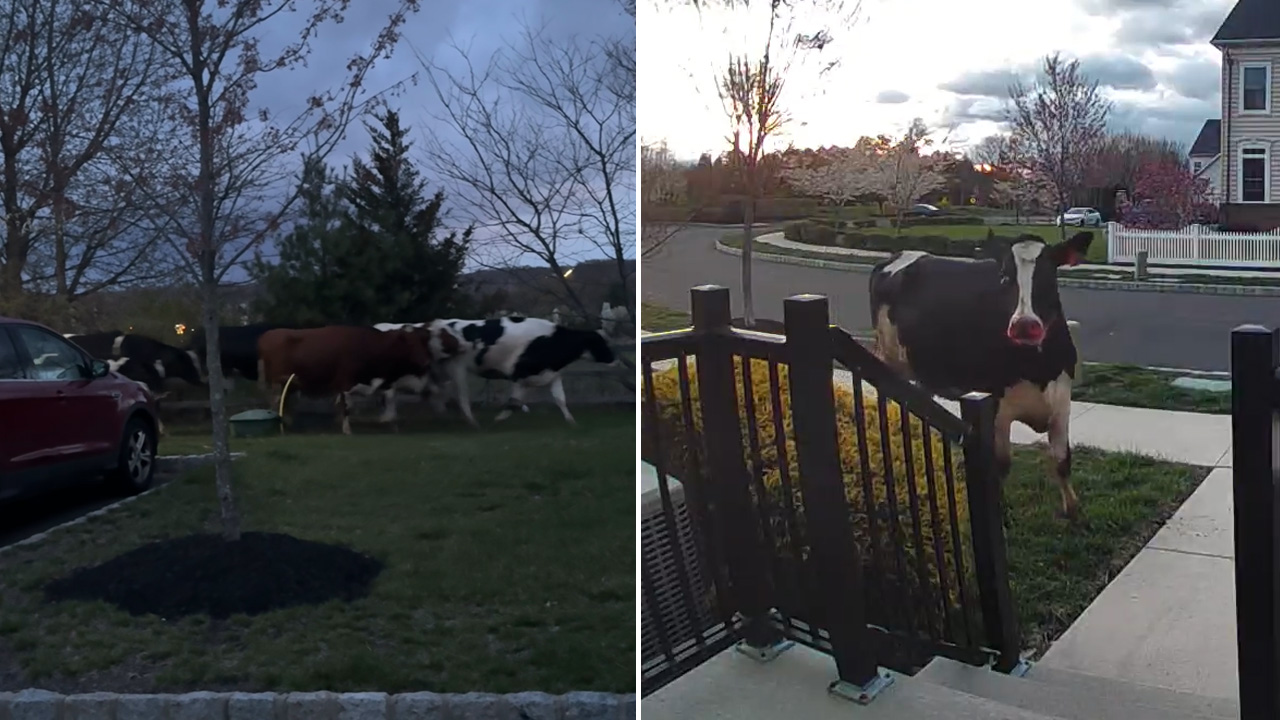Protecting Your Pets in Cold Weather


When temperatures plunge, the elements are not only dangerous for you -- but also for your pet.
Here are some tips for keeping pets safe provided by the SPCA:
1. Keep your cat inside. Outdoors, felines can freeze, become lost or be stolen, injured or killed. Cats who are allowed to stray are exposed to infectious diseases, including rabies, from other cats, dogs and wildlife.
2. Bang loudly on your car's hood before starting the motor. During the winter, outdoor cats sometimes sleep under the hoods of cars. When the motor is started, the cat can be injured or killed by the fan belt. If there are outdoor cats in your area, bang loudly on the car hood before starting the engine to give the cat a chance to escape.
3. Never let your dog off the leash on snow or ice, especially during a snowstorm -dogs can lose their scent and easily become lost. More dogs are lost during the winter than during any other season, so make sure yours always wears ID tags.
4. Thoroughly wipe off your dog's legs and stomach when he comes in out of the sleet, snow or ice. He can ingest salt, antifreeze or other potentially dangerous chemicals while licking his paws, and his paw pads may also bleed from snow or encrusted ice.
5. Never shave your dog down to the skin in winter, as a longer coat will provide more warmth. When you bathe your dog in the colder months, be sure to completely dry him before taking him out for a walk. Own a short-haired breed? Consider getting him a coat or sweater with a high collar or turtleneck with coverage from the base of the tail to the belly. For many dogs, this is regulation winter wear.
6. Never leave your dog or cat alone in a car during cold weather. A car can act as a refrigerator in the winter, holding in the cold and causing the animal to freeze to death.
7. Puppies do not tolerate the cold as well as adult dogs, and may be difficult to housebreak during the winter. If your puppy appears to be sensitive to the weather, you may opt to paper-train him inside. If your dog is sensitive to the cold due to age, illness or breed type, take him outdoors only to relieve himself.
8. Does your dog spend a lot of time engaged in outdoor activities? Increase his supply of food, particularly protein, to keep him - and his fur - in tip-top shape.
9. Like coolant, antifreeze is a lethal poison for dogs and cats. Be sure to thoroughly clean up any spills from your vehicle, and consider using products that contain propylene glycol rather than ethylene glycol. Visit the ASPCA Animal Poison Control Center more information.
10. Make sure your companion animal has a warm place to sleep, off the floor and away from all drafts. A cozy dog or cat bed with a warm blanket or pillow is perfect.
HYPOTHERMIA
Many pets may have a fur coat, but make no mistake, they can still suffer frostbite and hypothermia.
Hypothermia is the lowering of the body's core temperature and occurs when an animal's temperature falls abnormally low. The extent of the injuries varies with the body temperature and duration of hypothermia. Hypothermia can be fatal. Mild hypothermia causes an increase in blood pressure and heart rate, but if the time and severity of heat loss continues, heart rate and blood pressure decline and cardiac arrhythmias or cardiac arrest can occur.
Severe hypothermia leads to respiratory problems, lethargy, lack of coordination, paralysis, and possibly even death.
The first symptom of hypothermia is shivering. When a dog shivers, there is an increase in muscle activity, which increases heat production. At the same time, his blood circulation shifts away from his legs and feet to his internal organs. Other symptoms include slow and shallow breathing, weakness, and listlessness.
First aid for hypothermia:
Move your pet to a warm room
Warm your pet by wrapping him in blankets
Use hot water bottles wrapped in warm towels to warm him
Warm him with a heat lamp or hair dryer. Keep the lamp or dryer 12 inches from the animal
Seek veterinary care as soon as possible, even if it appears that your pet is fine. Kidney and bladder problems are common in pets that have been exposed to cold temperatures
FROSTBITE
Frostbite kills tissue. It is the death of tissue in the extremities. Most vulnerable on your pets are the toes, tails, ear tips, foot pads, legs, and male dog's genitalia.
Frostbitten tissue appears pale and is cold to the touch. Frostbite can be very painful and can result in the amputation of the dead tissue to avoid gangrene. Symptoms of frostbite include ice on the body and limbs, shivering, and bright red tissues turning to a pale color or black color.
First aid for frostbite
Warm the affected area rapidly with warm water using towels or warmed ice packs.
If a limb or paw is affected, soak it only in a bath or bowl of warm water. Do not immerse the animal completely in a bath since this will cause the body temperature to decrease.
Dry gently after you have the warmed the area
Avoid rubbing or massaging the frozen tissue
Always seek veterinary care as soon as possible
Links:
https://www.facebook.com/petaupairml






